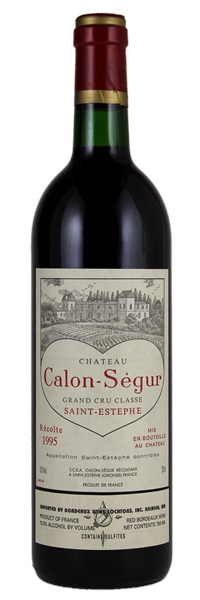Estimate


Subtle yet aromatic character of Indian spices, currants and dried cherries. Full-bodied, with super well-integrated tannins and a long, caressing finish.
Like its younger sibling, the wine possesses a sweet, rich mid-palate (from extract and ripeness, not sugar), layers of flavor, good delineation and grip, but generally unobtrusive tannin and acidity.
Nose of great purity: cassis, violet,minerals & bitter chocolate. A penetrating wine of outstanding vinosity and verve; offers great tensile strength. Youthfully tight, classic claret whose extremely long finish features very fine tannins.
...Focussed and savoury and impressive. Tight and dry on the finish in an impressive, appetising way. Good! A bit more dramatic. Lovely smoothness. Very fine and balanced and very St-Julien...

Subtle yet aromatic character of Indian spices, currants and dried cherries. Full-bodied, with super well-integrated tannins and a long, caressing finish.
Like its younger sibling, the wine possesses a sweet, rich mid-palate (from extract and ripeness, not sugar), layers of flavor, good delineation and grip, but generally unobtrusive tannin and acidity.
Nose of great purity: cassis, violet,minerals & bitter chocolate. A penetrating wine of outstanding vinosity and verve; offers great tensile strength. Youthfully tight, classic claret whose extremely long finish features very fine tannins.
...Focussed and savoury and impressive. Tight and dry on the finish in an impressive, appetising way. Good! A bit more dramatic. Lovely smoothness. Very fine and balanced and very St-Julien...

Subtle yet aromatic character of Indian spices, currants and dried cherries. Full-bodied, with super well-integrated tannins and a long, caressing finish.
Like its younger sibling, the wine possesses a sweet, rich mid-palate (from extract and ripeness, not sugar), layers of flavor, good delineation and grip, but generally unobtrusive tannin and acidity.
Nose of great purity: cassis, violet,minerals & bitter chocolate. A penetrating wine of outstanding vinosity and verve; offers great tensile strength. Youthfully tight, classic claret whose extremely long finish features very fine tannins.
...Focussed and savoury and impressive. Tight and dry on the finish in an impressive, appetising way. Good! A bit more dramatic. Lovely smoothness. Very fine and balanced and very St-Julien...

Subtle yet aromatic character of Indian spices, currants and dried cherries. Full-bodied, with super well-integrated tannins and a long, caressing finish.
Like its younger sibling, the wine possesses a sweet, rich mid-palate (from extract and ripeness, not sugar), layers of flavor, good delineation and grip, but generally unobtrusive tannin and acidity.
Nose of great purity: cassis, violet,minerals & bitter chocolate. A penetrating wine of outstanding vinosity and verve; offers great tensile strength. Youthfully tight, classic claret whose extremely long finish features very fine tannins.
...Focussed and savoury and impressive. Tight and dry on the finish in an impressive, appetising way. Good! A bit more dramatic. Lovely smoothness. Very fine and balanced and very St-Julien...

Subtle yet aromatic character of Indian spices, currants and dried cherries. Full-bodied, with super well-integrated tannins and a long, caressing finish.
Like its younger sibling, the wine possesses a sweet, rich mid-palate (from extract and ripeness, not sugar), layers of flavor, good delineation and grip, but generally unobtrusive tannin and acidity.
Nose of great purity: cassis, violet,minerals & bitter chocolate. A penetrating wine of outstanding vinosity and verve; offers great tensile strength. Youthfully tight, classic claret whose extremely long finish features very fine tannins.
...Focussed and savoury and impressive. Tight and dry on the finish in an impressive, appetising way. Good! A bit more dramatic. Lovely smoothness. Very fine and balanced and very St-Julien...

Subtle yet aromatic character of Indian spices, currants and dried cherries. Full-bodied, with super well-integrated tannins and a long, caressing finish.
Like its younger sibling, the wine possesses a sweet, rich mid-palate (from extract and ripeness, not sugar), layers of flavor, good delineation and grip, but generally unobtrusive tannin and acidity.
Nose of great purity: cassis, violet,minerals & bitter chocolate. A penetrating wine of outstanding vinosity and verve; offers great tensile strength. Youthfully tight, classic claret whose extremely long finish features very fine tannins.
...Focussed and savoury and impressive. Tight and dry on the finish in an impressive, appetising way. Good! A bit more dramatic. Lovely smoothness. Very fine and balanced and very St-Julien...